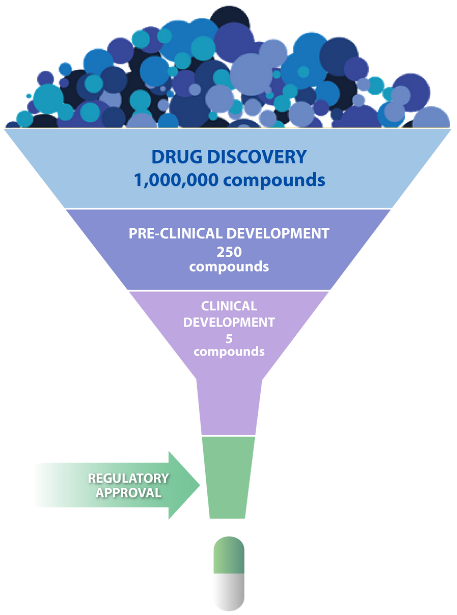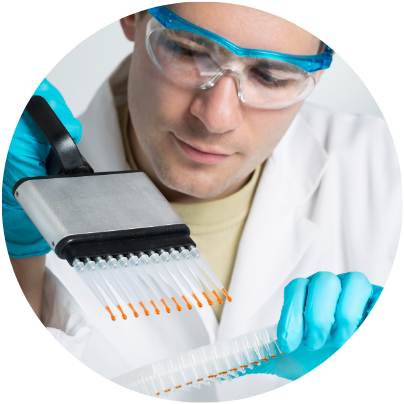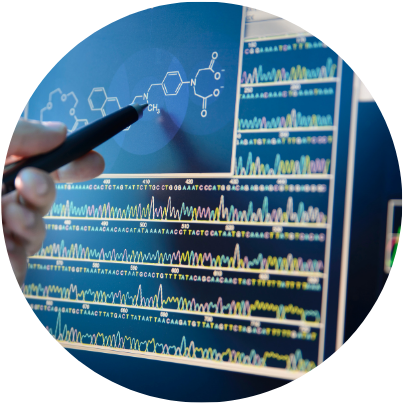-
Assays & Services
MULTISCREENTM Products
Services
Innovations
Have any Questions or Want a Quote?
Talk to a SpecialistSign Up For Our Newsletter
Email Sign Up -
Support
-
Assays & Services
MULTISCREENTM Products
Services
Innovations
Have any Questions or Want a Quote?
Talk to a SpecialistSign Up For Our Newsletter
Email Sign Up -
Support
Custom Drug Discovery Services & High Throughput Screening
Fast turn-around, 384-well format cell-based, phenotypic, and binding assays.
Scientific Insights


Custom Drug Discovery Services & High Throughput Screening

Custom Drug Discovery Services & High Throughput Screening
How Multispan Can Shorten Your Drug Discovery Timeline
Fully integrated:
• Cell engineering
• Assay development
• High throughput screening
• Eliminate transfer steps

Read More
Exceptionally fast turnaround. Unmatched quality control.
We perform weekly SAR lead optimization of a primary assay in just 1 day.
- HTS of 100,000 compound library and hit confirmation ⇒ in 1 month
- Weekly SAR lead optimization primary assay ⇒ in 1 day
- Monthly SAR lead optimization secondary assays ⇒ in 1-5 days
- 32-GPCR safety functional assay panel screening ⇒ in 5 days
- 50-GPCR+ Safety/Liability Functional Assay Panel
- 235-GPCR panel screening ⇒ in 4 weeks
We perform weekly SAR lead optimization of a primary assay in just 1 day.
- HTS of 100,000 compound library and hit confirmation ⇒ in 1 month
- Weekly SAR lead optimization primary assay ⇒ in 1 day
- Monthly SAR lead optimization secondary assays ⇒ in 1-5 days
- 32-GPCR safety functional assay panel screening ⇒ in 5 days
- 50-GPCR+ Safety/Liability Functional Assay Panel
- 235-GPCR panel screening ⇒ in 4 weeks

Reliable Assay Performance
We ensure our cell-based HTS assays consistently produce expected pharmacological responses using validated control ligands. Each 384-well microplate includes these internal controls, allowing us to monitor assay fidelity in real time.

High-Quality Standards with Z'-Factor Assurance
Our assays regularly exceed the industry-standard Z’-factor threshold of 0.5, demonstrating robustness and reliability for high-throughput screening. In the rare event a control compound produces inconsistent results, the entire plate is rerun without hesitation.

Transparent Data Delivery
Clients receive both raw and analyzed data sets, including results from control and test compounds. We are committed to complete transparency, empowering our partners to make informed decisions based on full experimental context.

Reliable Assay Performance
We ensure our cell-based HTS assays consistently produce expected pharmacological responses using validated control ligands. Each 384-well microplate includes these internal controls, allowing us to monitor assay fidelity in real time.

High-Quality Standards with Z'-Factor Assurance
Our assays regularly exceed the industry-standard Z’-factor threshold of 0.5, demonstrating robustness and reliability for high-throughput screening. In the rare event a control compound produces inconsistent results, the entire plate is rerun without hesitation.

Transparent Data Delivery
Clients receive both raw and analyzed data sets, including results from control and test compounds. We are committed to complete transparency, empowering our partners to make informed decisions based on full experimental context.
FAQs
High-throughput screening or HTS is a drug development technique used to rapidly evaluate the biological activity of a large number of compounds and targets. It is an essential part of discovering potential therepeutic compounds, known as lead candidates.
Virtual screening utilizes computer simulations to model compound interactions with a target, saving time and cost in the early stages of drug discovery where a subset of potential compounds must be identified for further validation in biological assays. HTS, on the other hand, requires more resources and time to physically test interactions between compounds and targets, but provides tangible data about compound activity. Virtual screening can be used to enhance HTS by narrowing down the scale of the actual campaign.
Microplates or microtiter plates are commonly used in HTS. While 384-well and 1536-well plates are ideal for greater throughput due to a higher density, 96-well plates are also amenable for smaller screening operations. Microfluidics systems are also used when small volumes of fluids and efficient reagent use are required.
A high-throughput screening campaign usually consists of these main steps: target identification, assay development, compound screening, analysis of results and hit selection.
Depending on the capabilities of the screening facilities, readiness of the bioassay, and the size of the compound library, HTS can take less than a week (for a small library with thousands of compounds) or a few months (for a large library with hundreds of thousands to millions of compounds). The overall HTS campaign duration, however, will vary significantly depending on the scope of the project.
